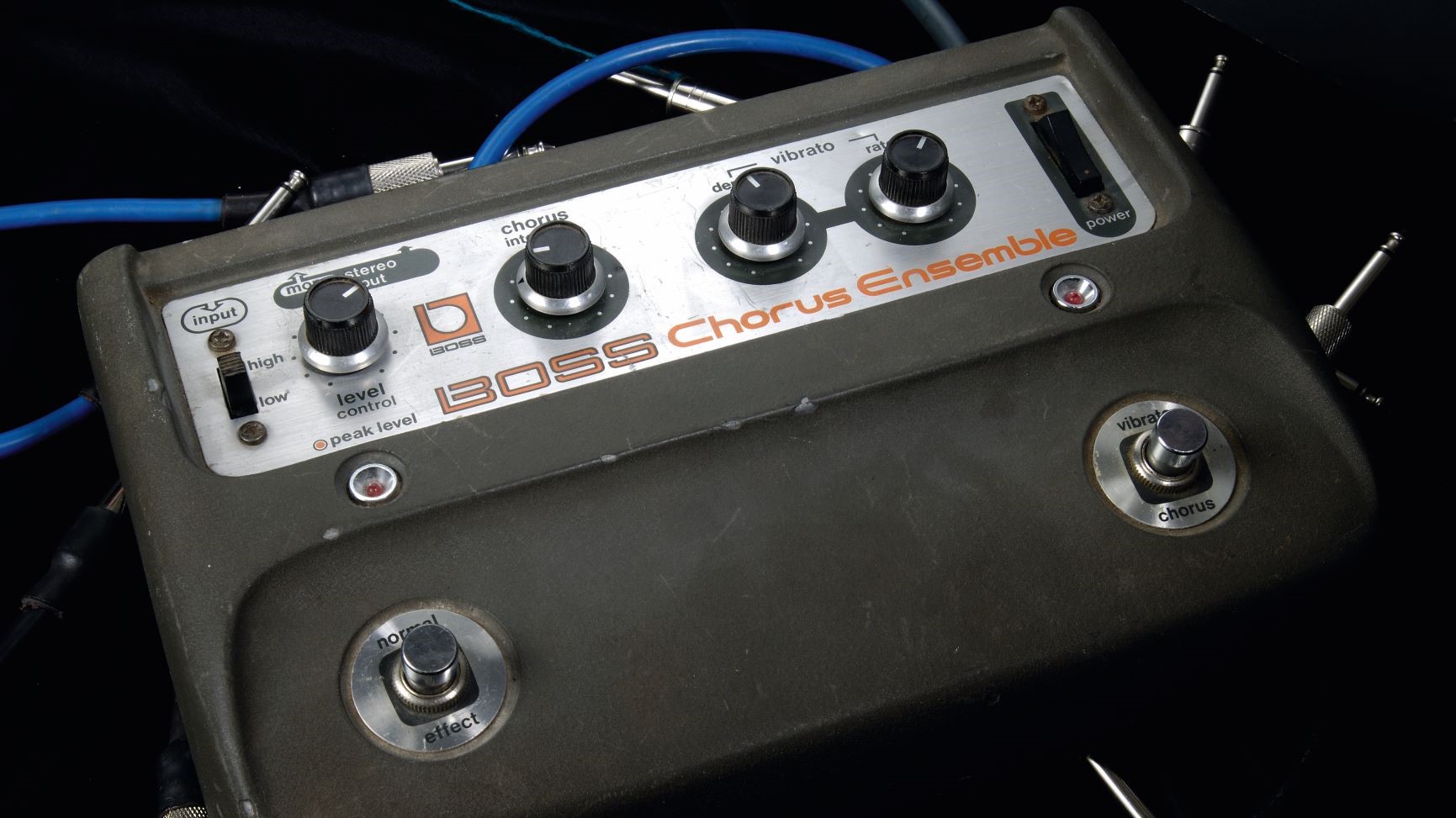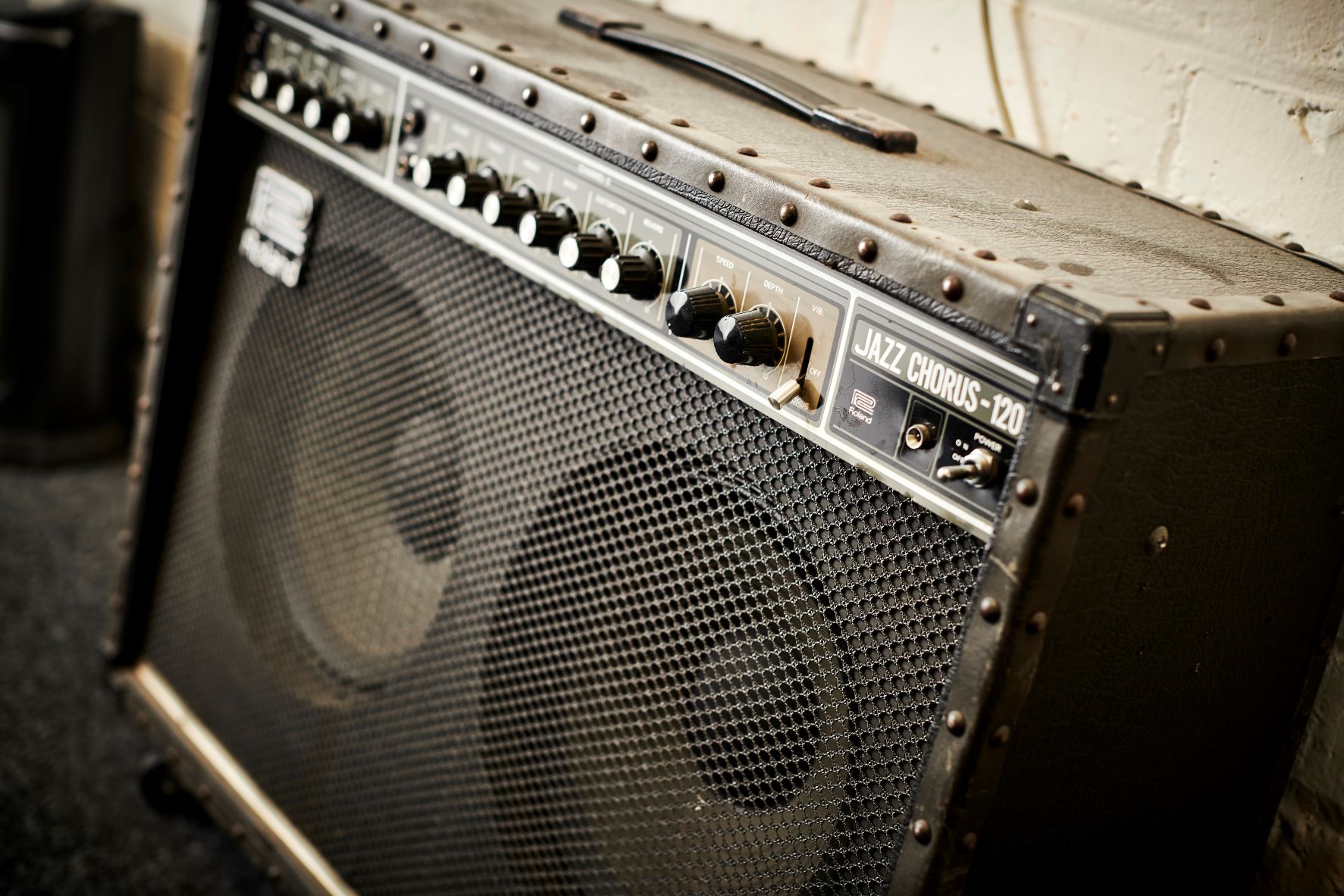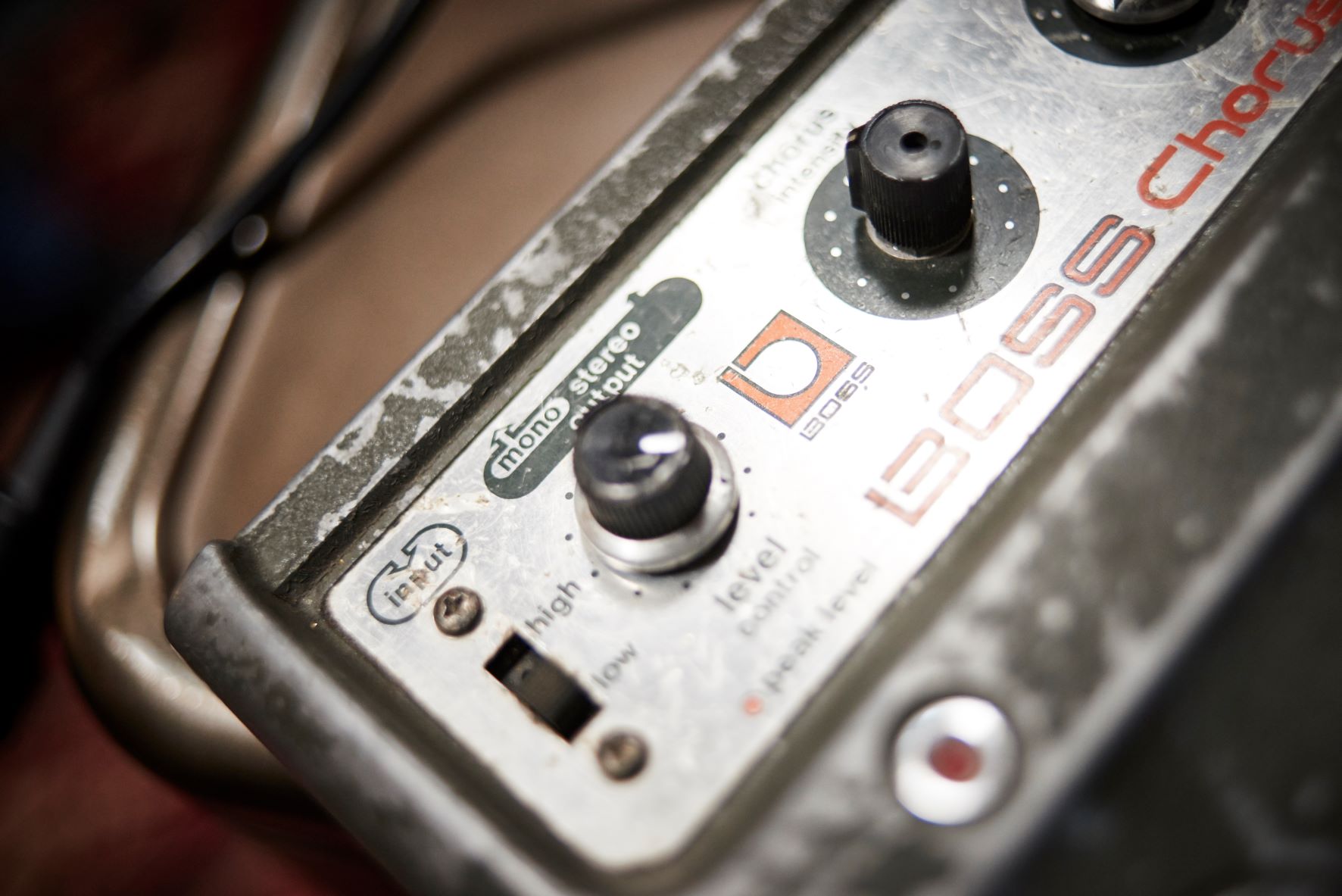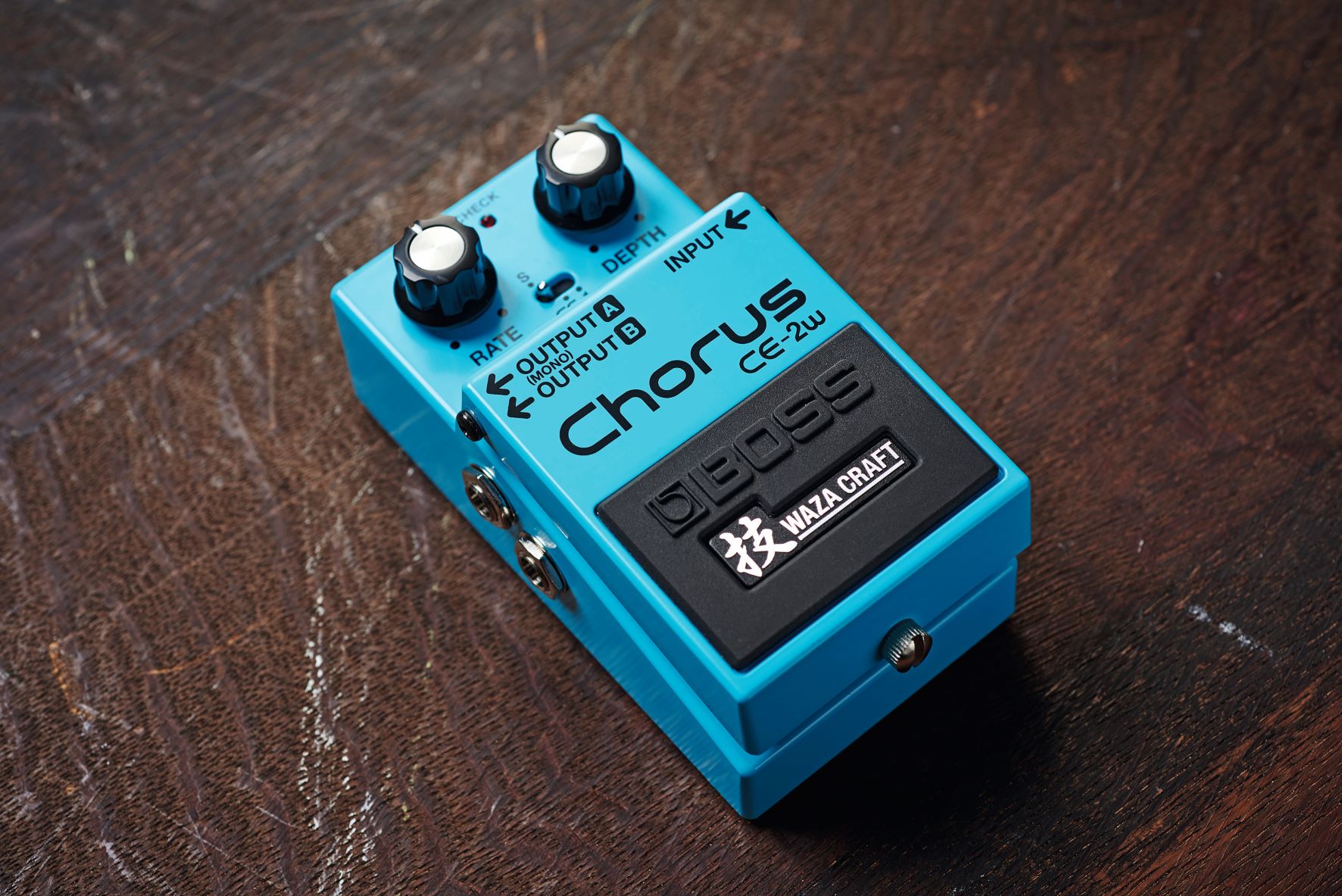Classic Gear: Boss CE-1 Chorus Ensemble
Boss got it right first time with this classic stompbox.

Throughout the development of the electric guitar and gear related to it, the first iterations of new designs haven’t always been the best. Gibson improved the Les Paul throughout the 1950s, Fender perfected the Bassman amplifier only with the final version of the tweed combo, and Vox arguably introduced the most classic AC30 when it added Top Boost several years after the first rendition arrived. Turn to the humble chorus pedal, though, and that pattern falls down entirely.
Few guitarists and collectors would disagree that the Boss CE-1 Chorus Ensemble of 1976 was the greatest such pedal amid a flood of effects that followed over the next decade and a half. And it’s still the source for many of the lushest, richest examples of the sound ever recorded.
Effects designers laid a path for the chorus pedal in the late ’60s when Japanese company Shin-ei introduced the Univox Uni-Vibe, an attempt to electronically recreate the sound of a Leslie rotary-speaker cabinet in a compact unit. The Uni-Vibe was more phaser-meets-vibrato than chorus, despite its dual-mode Vibrato/Chorus switch, but it helped popularize a sibling sound in the realm of analog modulation effects.

Boss’s parent company, Roland, first issued its stereo chorus circuit in the Roland JC-120 and JC-60 Jazz Chorus amplifiers of 1975, and countless electric guitar players swooned over the sound (as did the keyboard players for whom the amplifiers’ dual use was intended). The following year, the same effect was packaged into an outboard box in the Boss CE-1 Chorus Ensemble, and a legend was born.
Thick, spatial and multidimensional it sounded great in mono and otherworldly in stereo through two guitar amps. In addition to being the first in a line of legendary chorus pedals, and an inspiration for countless others from rival manufacturers, the CE-1 is often said to be the first effect to use a bucket-brigade device (BBD) in its circuit. This might seem dubious when you note that the BBD-loaded Electro-Harmonix Memory Man was also released in 1976, but it takes on more validity when you consider that the CE-1’s circuit was contained in the JC-120 and JC-60 amps prior to the pedal’s arrival.

The CE-1 was housed in a larger and heavier enclosure than most common pedals today, but so were many of the more complex effects of the ’70s. It carried two foot switches – one to turn the effect on and off and another to switch between its vibrato and chorus effects – along with a level control, a control for chorus intensity, two knobs for vibrato depth and rate, a power switch to engage its hardwired AC power and a high/low input switch.
Boss unveiled its ubiquitous compact pedal line in 1977, and the company’s brightly colored renditions of just about every effect under the sun rolled out continually thereafter. In 1979, the CE-2 Chorus joined the ranks, taking the same sound into a compact format that sacrificed the vibrato effect and the stereo outputs. Even so, the CE-1 itself remained in production until around 1984.
Get The Pick Newsletter
All the latest guitar news, interviews, lessons, reviews, deals and more, direct to your inbox!
Ask for classic examples of the CE-1 on record and most guitarists will point to Andy Summers of the Police, who laid down that evocative modulation on many of the band’s tracks, including “Message in a Bottle,” “Don’t Stand So Close to Me” and “Walking on the Moon.”
Soon, though, the sound of a chorused guitar was busting out all over the place, often as delivered by the more compact CE-2, Electro-Harmonix’s Small Clone and the more deluxe renditions that would follow from Boss and many other makers.

If the feature-laden digital chorus effects of the late ’80s and ’90s didn’t entirely kill off the analog chorus, they did push it underground for a few yearS while ushering in an arguably cheesier use of the effect on some occasions.
Eventually, guitarists who hadn’t chucked their original analog boxes into the dumpster, and others who wondered why so many of the earlier recordings sounded so good, were rediscovering the glories of the BBD chip, which have now been firmly re-established.
Essential Ingredients
- All-analog circuit using bucket-brigade device (BBD) chips
- Large die-cast metal enclosure
- Dual foot switches for Normal/Effect and Vibrato/Chorus modes
- Stereo outputs
- Hardwired for AC power
Visit the Boss website to check out the CE-2W featuring CE-1 Chorus Ensemble Chorus and Vibrato modes
Dave Hunter is a writer and consulting editor for Guitar Player magazine. His prolific output as author includes Fender 75 Years, The Guitar Amp Handbook, The British Amp Invasion, Ultimate Star Guitars, Guitar Effects Pedals, The Guitar Pickup Handbook, The Fender Telecaster and several other titles. Hunter is a former editor of The Guitar Magazine (UK), and a contributor to Vintage Guitar, Premier Guitar, The Connoisseur and other publications. A contributing essayist to the United States Library of Congress National Recording Preservation Board’s Permanent Archive, he lives in Kittery, ME, with his wife and their two children and fronts the bands A Different Engine and The Stereo Field.
"The only thing missing is the noise from the tape loop." We review the Strymon EC-1 Single Head dTape Echo, a convincing take on a very special vintage tube Echoplex
"BigSky MX will be replacing the BigSky as my go-to reverb pedal. I’ve heard nothing that covers all the bases with such pristine and detailed audio quality." We crowned the Strymon BigSky MX the champ of multi-reverb pedals











